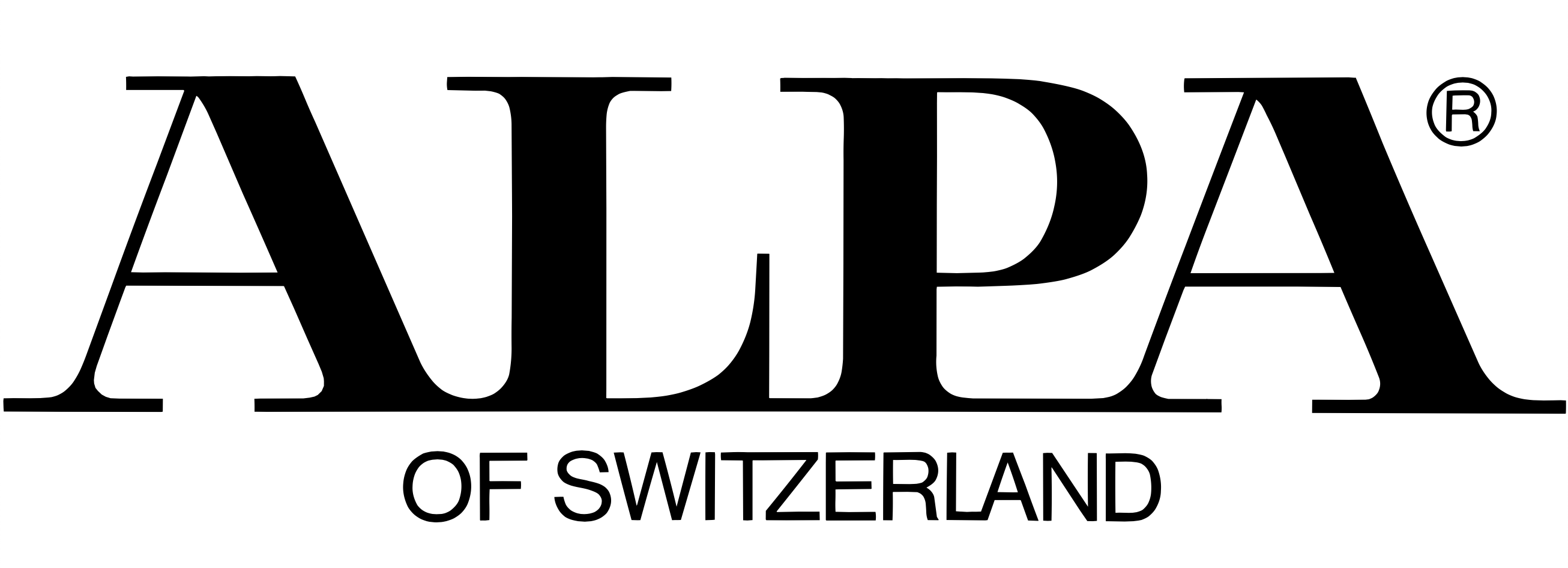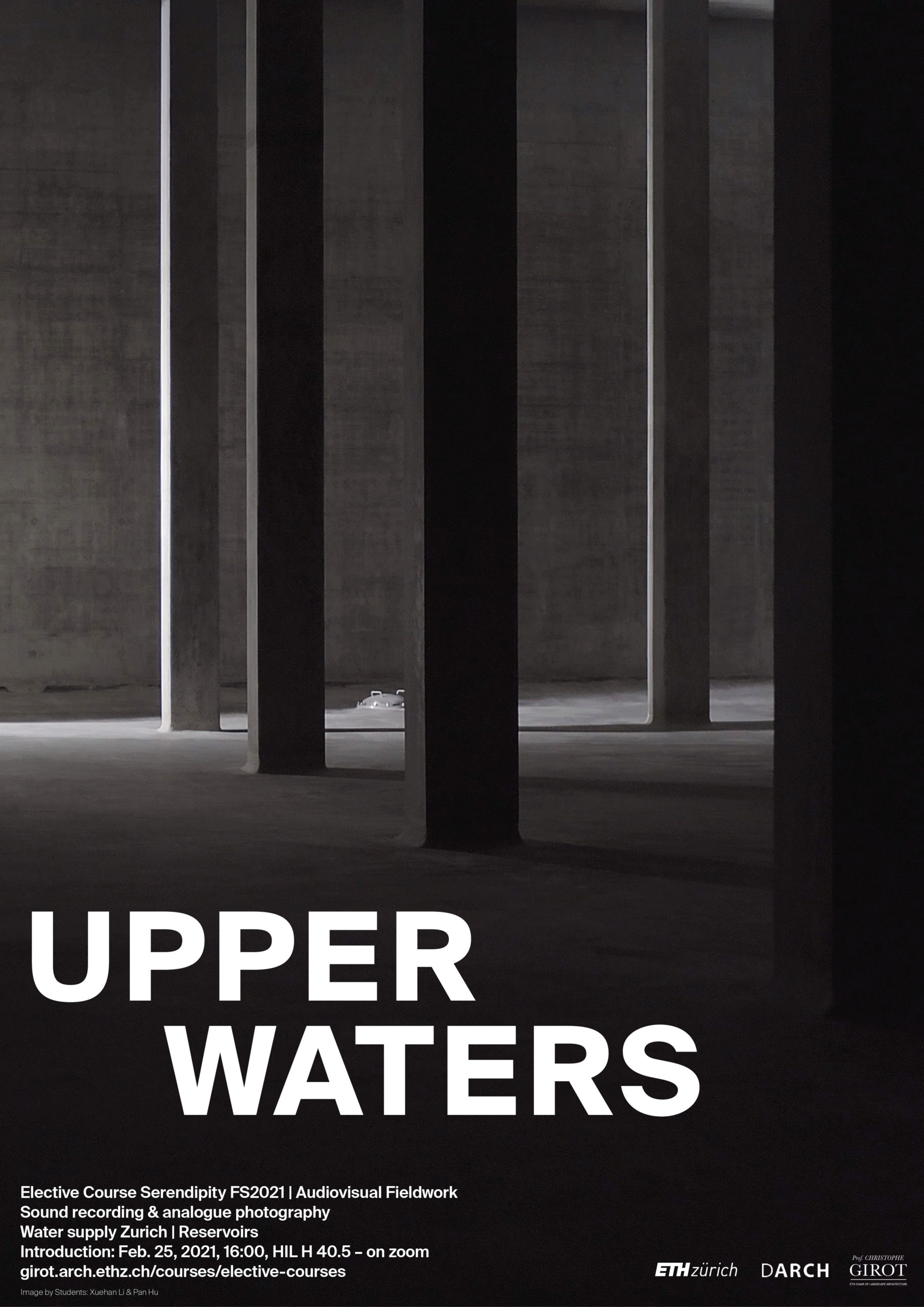
We will approach the water infrastructure of Zurich with sound recorders and analogue medium format cameras. Spending time in and around the reservoirs will give us the possibility to emerge into the system of water and observe it on different scales. Following the field work the students will work on an audiovisual composition due to the pandemic remotely from home. If the situation in the spring allows for it, physical meetings, the use of the analogue PhotoLab and the AudioVisual-Lab are preferred.
We want to understand the spatial characteristics drawn by light and sound and create a new perception of these places. What spatial qualities can we find in this hidden underground landscapes? And how can we present these discoveries in an audiovisual work?
TOOLS: Analoge Photography / Sound recorders and contact microphones / analogue Photo development and digital Sound processing
CORONA: Due to the pandemic and the current situation during the semester, the course may still be adjusted. It is unclear at the moment whether a visit inside the reservoirs will be possible. Likewise, the physical work in the laboratories will have to be adapted selectively, depending on the rules and regulations.
TEACHING TEAM: Prof. Christophe Girot, Ludwig Berger, Fabian Gutscher, Dennis Häusler, Johannes Rebsamen, Matthias Vollmer
CONTACT: Dennis Häusler
ZOOM LINK FOR INTRODUCTION: https://ethz.zoom.us/j/97839041231
SCHEDULE:
Feb 25 Introduction & Registration
Mar 04 Technical introduction
Mar 06-07 Workshop weekend (due to the pandemic with restrictions)
Mar 11 Photographic development and sound editing introduction
Mar 18 Early Mid Crit (presentation of gathered material)
Mar 25 – no course – (seminar week)
Apr 01 Individual work: Photographic development and sound editing
Apr 08 – no course – (easter break)
Apr 15 Late Mid Crit
Apr 22 Individual work: Photographic development and sound editing
Apr 29 Individual work: Photographic development and sound editing
Mai 06 Final Crit
Student works of the Final Review Mai 2021
After a long journey from its alpine sources, Zurich’s drinking water is stored in hidden chambers underground before it is ultimately directed to the user. Although being vital to everyday life, these very specifically designed and highly connected infrastructures remain mostly out of sight. The fresh-water reservoirs form a ring of single bodies located on the hilltops around the city’s center. A second lake of the city—decentralized, artificial, underground.
Throughout the historic development of Zurich it’s water supply has been critical to its flourishing as a city. Drinking water could initially only be sourced from groundwater wells or local springs. Both of which still play a role in today’s water supply. But additionally and most importantly today is the sourcing of lake water. The latest opportunity gradually became possible due to a combination of better filtration systems and the cleaning of rivers and lakes in and around Zurich.
Different infrastructure and nationwide fishery and water protection laws established around 1900 made this shift possible. Ever since the water quality is constantly monitored and improved especially in regards to agricultural chemicals. Since 1914 Zurich gains a large portion of its drinking water from the lake even if a plurality of water sources is maintained for the water system to be resilient towards possible threats and natural disaster.
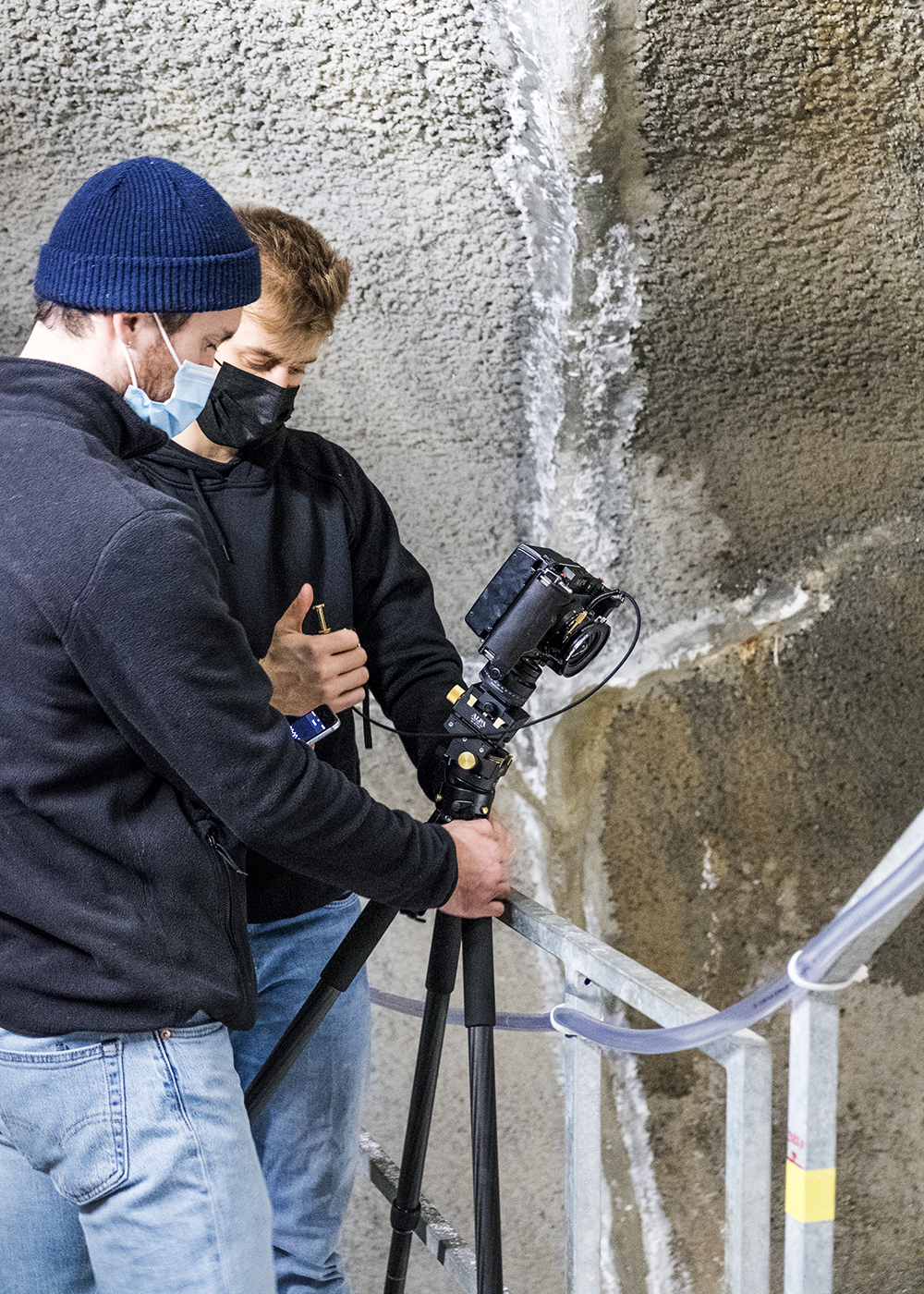
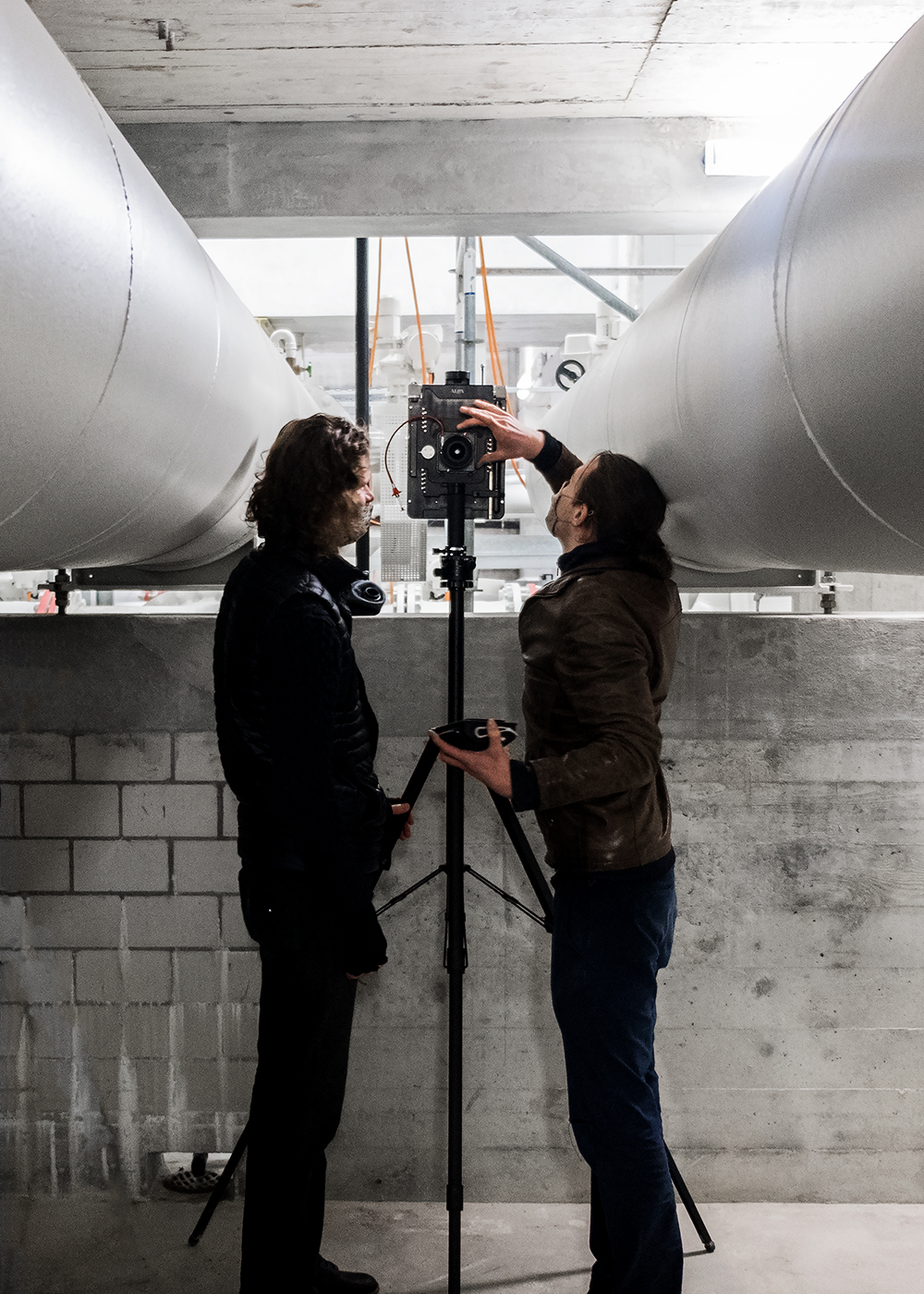
Field work at the water reservoir Lyren, Zurich. 2021

Photographic result from ALPA camera equipment.2020
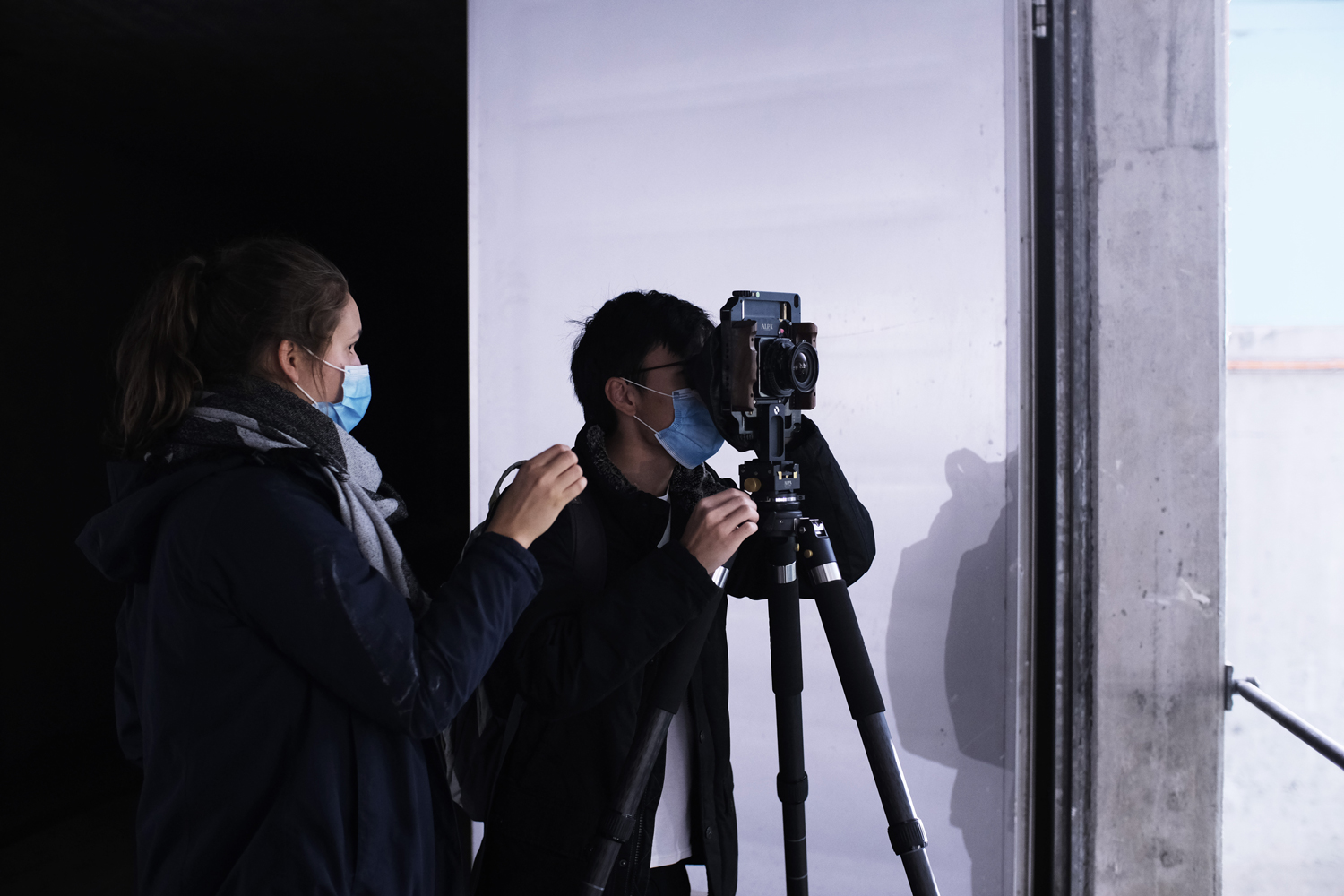
Feld work at the water treatment plant Lengg, Zürich. 2020
With support from:



